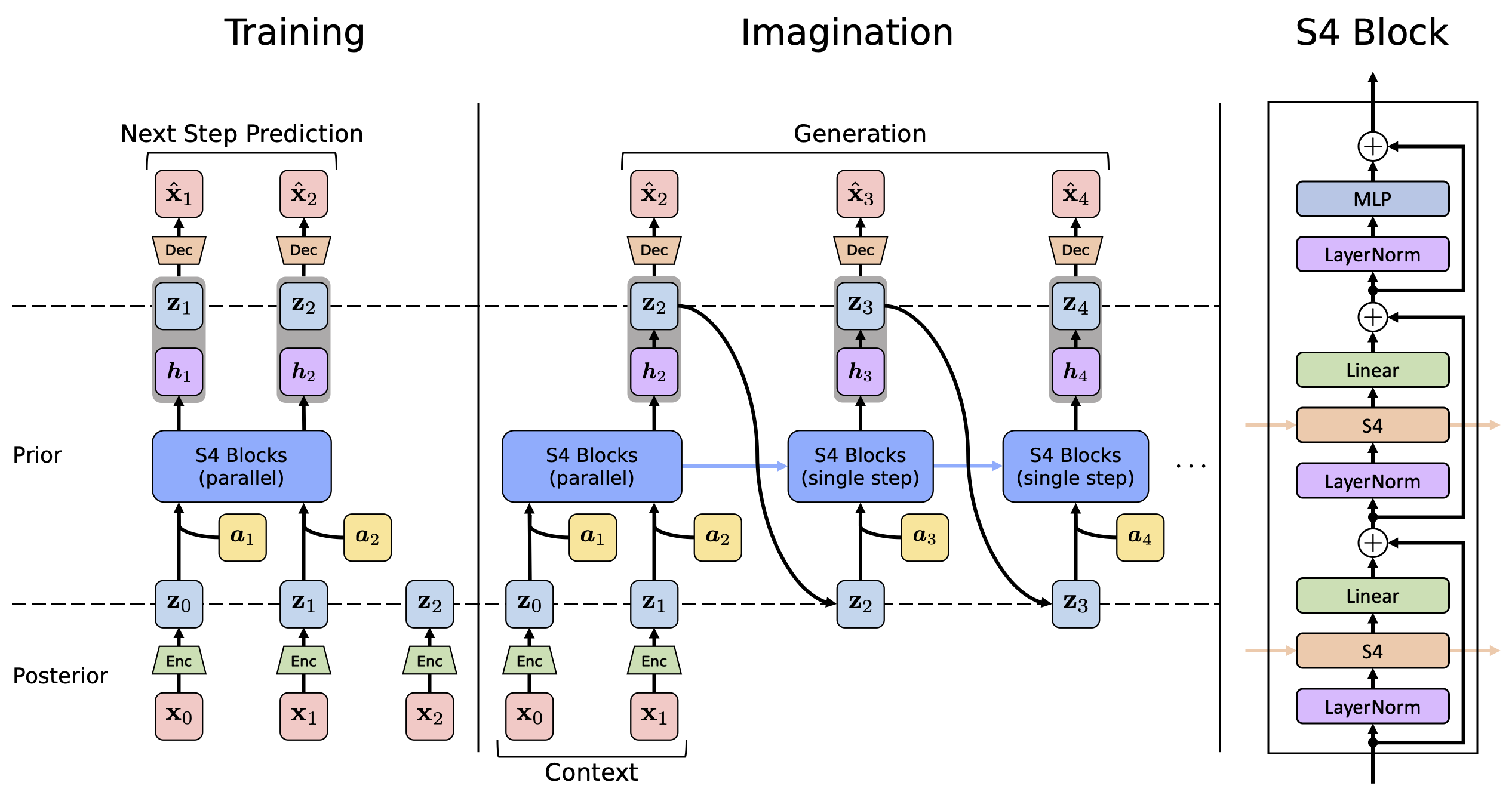World models are a fundamental component in model-based
reinforcement learning (MBRL). To perform temporally extended
and consistent simulations of the future in partially observable
environments, world models need to possess long-term memory.
However, state-of-the-art MBRL agents, such as Dreamer,
predominantly employ recurrent neural networks (RNNs) as their
world model backbone, which have limited memory capacity. In
this paper, we seek to explore alternative world model backbones
for improving long-term memory. In particular, we investigate
the effectiveness of Transformers and Structured State Space
Sequence (S4) models, motivated by their remarkable ability to
capture long-range dependencies in low-dimensional sequences and
their complementary strengths. We propose S4WM, the first world
model compatible with parallelizable SSMs including S4 and its
variants. By incorporating latent variable modeling, S4WM can
efficiently generate high-dimensional image sequences through
latent imagination. Furthermore, we extensively compare RNN-,
Transformer-, and S4-based world models across four sets of
environments, which we have tailored to assess crucial memory
capabilities of world models, including long-term imagination,
context-dependent recall, reward prediction, and memory-based
reasoning. Our findings demonstrate that S4WM outperforms
Transformer-based world models in terms of long-term memory,
while exhibiting greater efficiency during training and
imagination. These results pave the way for the development of
stronger MBRL agents.






